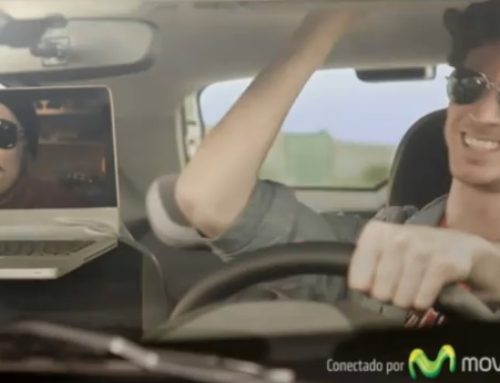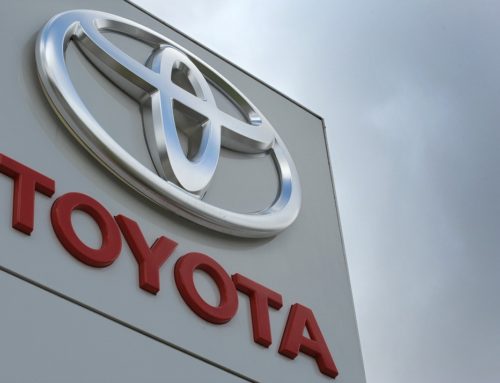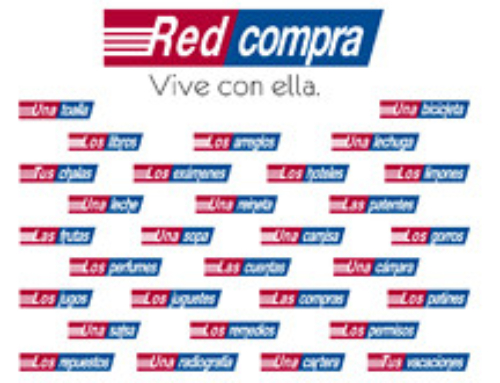The Chilean automotive industry has some distinctive characteristics that make it one of the most competitive in the world. In Chile you can find a large number of brands from all over the world, with an established offer of more than 1,400 models and versions dominated by the functionality and a strong ratio quality-price of the vehicles.
The 19 % of the market is represented by the Sport Utility Vehicles (SUV) segment, led by companies like Hyundai, Suzuki, Toyota, Nissan, Chrysler and KIA, brands that totalize the 64% of this segment, having most of them more than 20 years in the market (ANAC, 2011). By the other hand, SUVs represent the most aspirational segment of consumers because they consider cars as synonym of status, success, versatility and image.
In this context the Chinese company Great Wall Motors entered in 2007 to the Chilean market, competing directly with the Japanese, Korean and American brands. After a year the results were terrible, selling only 27 units per month of their “Hover” SUV model and a total of 78 units all the 2010, compared with the other SUV brands that sold more than 450 units in average (Effie Awards, 2011). The major problem was that Chinese car brands had in Chile a poor image (the cheapest is worst), a history of bad performance and constant failures with lots of customers’ complaints (CHV, 2009).
The Marketing Communication Campaign
In 2010 Great Wall decided re-launch the brand entering in the same aspirational and competitive SUV segment with their new car “Haval”, competing again with the Japanese and Korean brands.
Taking in consideration their last failure with the line “Hover”, they fixed for the new 5 month campaign a sales objective of 120 units per month and 180 online web based quotes.
The idea was to re-launch the brand with their new line “Haval” in the Argentina-Chile Dakar Rally 2010, the hardest and most exigent automobilist race in the world (Dragon Dakar, 2011), showing that a Chinese SUV can accomplish all the requirements to compete in an extreme competition.
The first step of the strategy was to invite specialized automobile journalists to participate in the race, along with a Haval, making them live a special experience with the model while they were reaching the Dakar Rally in the middle of the desert. After that journey, the journalists wrote more than 30 articles about the Haval, their experience with the Rally and the desert and perfect performance of the SUV.
Parallel to the publication of the articles, Great Wall made the official launch of the Haval in newspapers, digital medias and performed public relationships even with the Chilean president (Dragon Dakar, 2011).
The second stage of the campaign was to reach the final customers with a great amount of press advertising showing the success of the Haval in the Dakar Rally, their characteristics, attributes and design, and with internet banners pointing at the official Great Wall web site, very well dressed with all the rally´s vicissitudes.
The principal message was “Test the movement driving”, like saying come and see how the Haval really performs in the worst conditions of the world. After the 5 month campaign the results were exceptional, exceeding the sales objectives by a 170% reaching more than 300 quotes per month, positioning the brand as the fourth SUV in sales in Chile.
The specialized journalist recognition of the great performance of the car (22th place among 156 competitors) was the principal argument to put Haval into the most sold in their segment, smashing all the myths of the Chinese car brands.
Differences and similarities between the Chilean and the Saudi Arabian country
The Islam-Arabic country Saudi Arabia has emerged from being an underdeveloped desert kingdom to become one of the wealthiest nations in the Middle East, with an increasing GPD (ppp) per capita of $ 24,200 (Index Mundi, 2011) and an estimate population of more than 26 million people. It is considered one of the nearest countries to the accidental culture, aware that they are still an Islamic one.
Regarding to medias, the TV is controlled by the government, however the country is a mayor market for pan-Arab satellite and pay-tv systems, has a dozen newspapers and finally more than 13 million internet users (BBC News, 2012).
The automotive market is growing very fast, becoming one of the biggest within its region, capturing the interest and valuation of the population, specially the competitive SUV market. Lots of brands and varieties of models are present, being Toyota, Hyundai, Ford, Chevrolet and KIA the most important with more than 80% of the market share (TAB, 2012).
As we see, both countries share lots of similitudes: are growing emerging markets, with middle-high level incomes, growing automotive markets with Japanese, Korean and American brands, and most of all, important deserts like the Arabian and the Atacama Desert (Infoplease, 2007).
Adaptation of the Campaign
Because they share a crucial similitude like the deserts, the most singular part of the campaign can be used. This environment will make sense to the Arabian people, not needing to explain that if a SUV runes and finishes the Dakar Rally it has to be an exceptional car.
The target market will be the same aspirational segment of customers that are looking for a great performance with the best price. We face the same credibility problems of the Chinese brands, and most of all, the unfamiliarity with them because the low penetration (TAB, 2012).
Going to the campaign, the first problem that we face is that the Dakar Rally occurs in Chilean soil. Then we will translate the Arabian specialized journalist to Chile, making them participate in an exiting and wonderful trip to the most famous desert of the world to see the hardest race of their life. The second strategy will be to create a contest between the “SUV lovers” to win free trips to participate in the race, taking advantage of the high penetration of internet (BBC News, 2012) using social media networks to reach them; the only condition will be that they have to periodically post their adventure with the brand in the different stations of the rally (Dragon Dakar, 2011). And the third adaptation will be having a sponsored car, the “Great Wall – Saudi Arabian Team” to link the brand, with the race and the people that won the contest and traveled to the Chilean desert.
The Arabian automobile journalists will have to write about their experience in the Dakar Rally and the performance of the car. As the same that occurred in the Chilean campaign, we will launch the brand in between the race, reporting the rally´s develop and stories of the “SUV lovers”. After that, we will make the same second stage of the original campaign, reaching the final customers with mass advertising showing the characteristics, attributes, comfort and price of the new brand.
The medias that we will use are newspapers for a more technical approach, targeted satellite channels and digital medias directing visits to the official site with all the information of Dakar Rally.
References
Effie Awards (2011). Cómo ganaron. Campañas de marketing más efectivas. Retrieved on August 8, 2012 from http://www.effie.cl/revistas/comoganaron2011.pdf
Great Wall (2012). Company overview. Retrieved on August 8, 2012 from http://www.topgreatwall.com/great/page.php?lang=en&page_name=about
Dragon Dakar (2011). Haval Suv, N°1 Suv brand in China. Retrieved on August 8, 2012 from http://www.gwm.com.cn/en/event/dakar2012/images/dakar_2011.pdf
ANAC (2011). Mercado automotor Chile 2010. Retrieved on August 8, 2012 from http://www.anac.cl/index.php?option=com_content&view=article&id=74&Itemid=98
GW Cars (2012, January 31). Great Wall North EDSA. Restrieved on August 8, 2012 from https://plus.google.com/u/0/114626007450325832546/posts/bfD8XRBie18
CHV (2009, August 24). Peligrosos autos Chinos de mala calidad. Retrieved on August 8, 2012 from http://www.chilevision.cl/home/content/view/191959/81/
Index Mundi (2011, January 1). GPD per capita (PPP) – Middle East. Retrieved on August 9, 2012 from http://www.indexmundi.com/map/?t=0&v=67&r=me&l=en
BBC News (2012, July 31). Saudi Arabia profile. Retrieved on August 9, 2012 from http://www.bbc.co.uk/news/world-middle-east-14702705
Infoplease (2007). Principal deserts of the world. Retrieved on August 9, 2012 from http://www.infoplease.com/ipa/A0778851.html/
TAB (2012, April 30). Saudi Arabia – 2012 car sales statistics. Thailand Autobook 2012. Retrieved on August 9, 2012 from http://thaiautobook.blogspot.com/2012/04/saudi-arabia-2011-car-sales-statistics.htm
Related articles
- In Case You Didn’t Know, The Dakar Rally Is Insane (jalopnik.com)
- Dakar Rally drivers race across Peru’s dunes during stage four (photoblog.nbcnews.com)






Leave A Comment